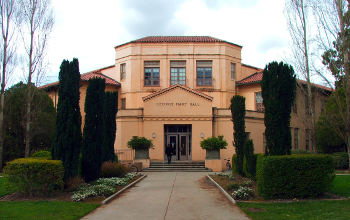Below was the handout I passed during my talk last October 14, here at THD.Needless to say my talk was resounding success based on comments after my talk. My goal of spreading good words about the Philippines to fellow senior residents who have little knowledge of the country of my birth has been achieved. Thank You, THD management for celebrating Filipino-American History Month by featuring a Filipino Dinner, A Resident Talk and several award winning movies for the whole month of October here at our Cinema.
IMPORTANT TIMELINE in Philippine History
Some key dates in The Philippines' history:
900AD - Laguna Copperplate Inscription, mostly written on Old Malay, is the earliest record of a Philippine language and the presence of writing in the islands.
11th Century - Some areas become part of China's tributary system.
14th Century - Indian cultural traits such as linguistic terms and religious practices began to spread in the Philippines.
15th Century - Islam is first established in the Sulu Archipelago.
1521-Ferdinand Magellan discovered the Philippines, but was killed in Mactan, Cebu
1565-First Spanish Settlement in the Philippines. Legazpi arrived in Cebu (the chief port of Visayas) from New Spain (México) in 1565 with six Augustinian friars. As the first royal governor and captain-general (gobernador y capitán general), Legazpi established the first permanent Spanish settlement, built a chapel and erected a fort.
1542 - Spanish expedition claims the islands and names them the Philippines after the heir to the Spanish throne. Three centuries of Spanish rule fail to conquer Muslim areas in the south.
1762-64- The British Occupied Manila for Eighteen Months
1896-98 - Philippine Revolution: Filipino revolutionaries fight against the Spanish colonial authorities in an attempt to win the archipelago's independence.
1897 - Spanish authorities and revolutionaries sign the Pact of Biak-na-Bato, which temporarily reduces, and revolutionary officers exile themselves to Hong Kong.
1898 - During the Spanish-American War, the US navy destroys the Spanish fleet in Manila Bay. Spain cedes the Philippines to the US, which proclaims military rule and begins to forcibly incorporate Muslim areas.
1898-1902 - Philippine-American War: Tensions arise after the US annexes the Philippines under the Treaty of Paris at end of the Spanish-American War rather than acknowledging the Philippines' declaration of independence. The war can be seen as a continuation of the Philippine struggle for independence that began in 1896 with the Philippine Revolution.
1916 - Jones Act, or Philippine Autonomy Act, which has the first formal declaration by the US to grant eventual independence to the Philippines.
1935 - Commonwealth of the Philippines: Philippines gains internal self-government, with the US responsible for foreign relations.
1941-1945 - The Philippines are occupied by Japan during the World War Two, but are retaken by the US in bitter fighting. More than 500,000 Filipinos die during the war.
1946 - The islands are granted full independence and renamed the Republic of the Philippines.
1942-1954 - Hukbalahap Rebellion: Rebellion by former Hukbalahap or Hukbong Bayan Laban sa Hapon ("People's Army Against Japan") soldiers against the Philippine government. During the Japanese occupation the Huk guerrillas created village strongholds against the Japanese. After 1945, the new Philippine government, prompted by the US disarmed and arrested the Huks for allegedly being communists. The rebellion eventually petered out in the 1950s.
1965 - Ferdinand Marcos is elected president; he declares martial law in 1972.
1983 - Anti-Marcos lawyer Benigno Aquino is assassinated at Manila's airport as he returns from exile.
1986 - Marcos ousted in "people power" revolt after claiming victory over Aquino's widow in an election that many believe was stolen.
2001 - President Joseph Estrada is forced out by a military-backed "people power" uprising.
2014 - The Moro Islamic Liberation Front rebel group signs a peace deal with the government, ending one of Asia's longest and deadliest conflicts.
2017 - Islamic State jihadists attack the city of Marawi in Mindanao.
2022 - Ferdinand Marcos Jr, son of the previous dictator, is elected president.
Personal Note: Have You Heard of Carlos Bulosan? He was a prolific writer and poet, best remembered as the author of America Is in the Heart, a landmark semi-autobiographical story about the Filipino immigrant experience.
Bulosan gained recognition in mainstream American society with the 1944 publication of Laughter of my Father, which was excerpted in the New Yorker, Harper’s Bazaar, and Town and Country. He immigrated to America from the Philippines in 1930, endured horrendous conditions as a laborer, became active in the labor movement, and was blacklisted along with other labor radicals during the 1950s. He spent his last years in Seattle, jobless, penniless, and in poor health.
UC Davis has the Bulosan Center for Filipino Studies to honor the memory of Carlos. In 2019, the state of California granted the Bulosan Center $1,000,000 to facilitate its continued growth. With that money, the Center hired staff and has been able to fully fund the research of several graduate students whose work will have a direct impact on the Filipinx American community.





No comments:
Post a Comment